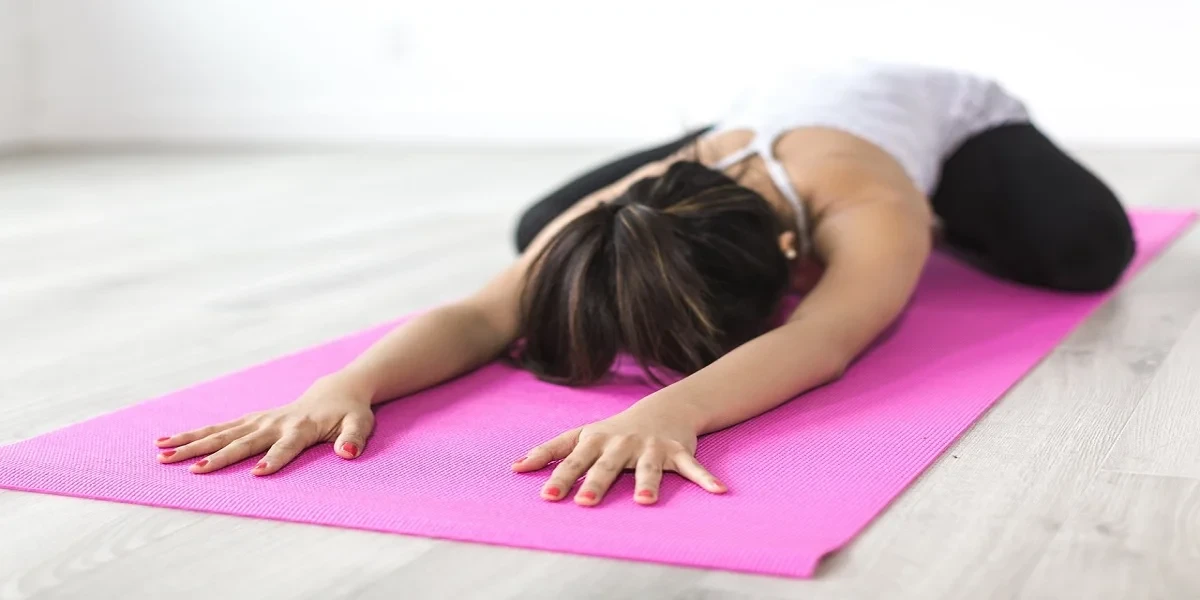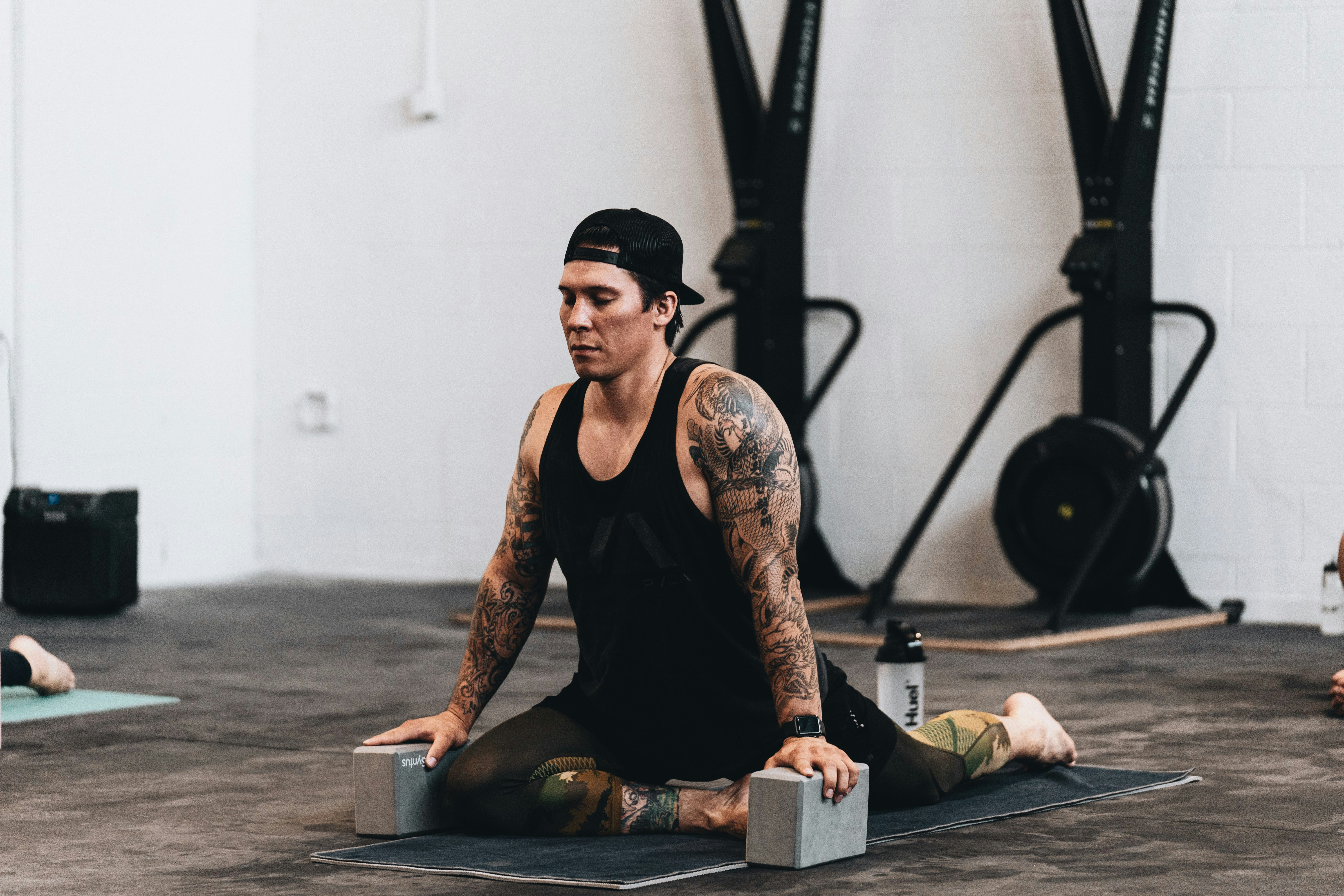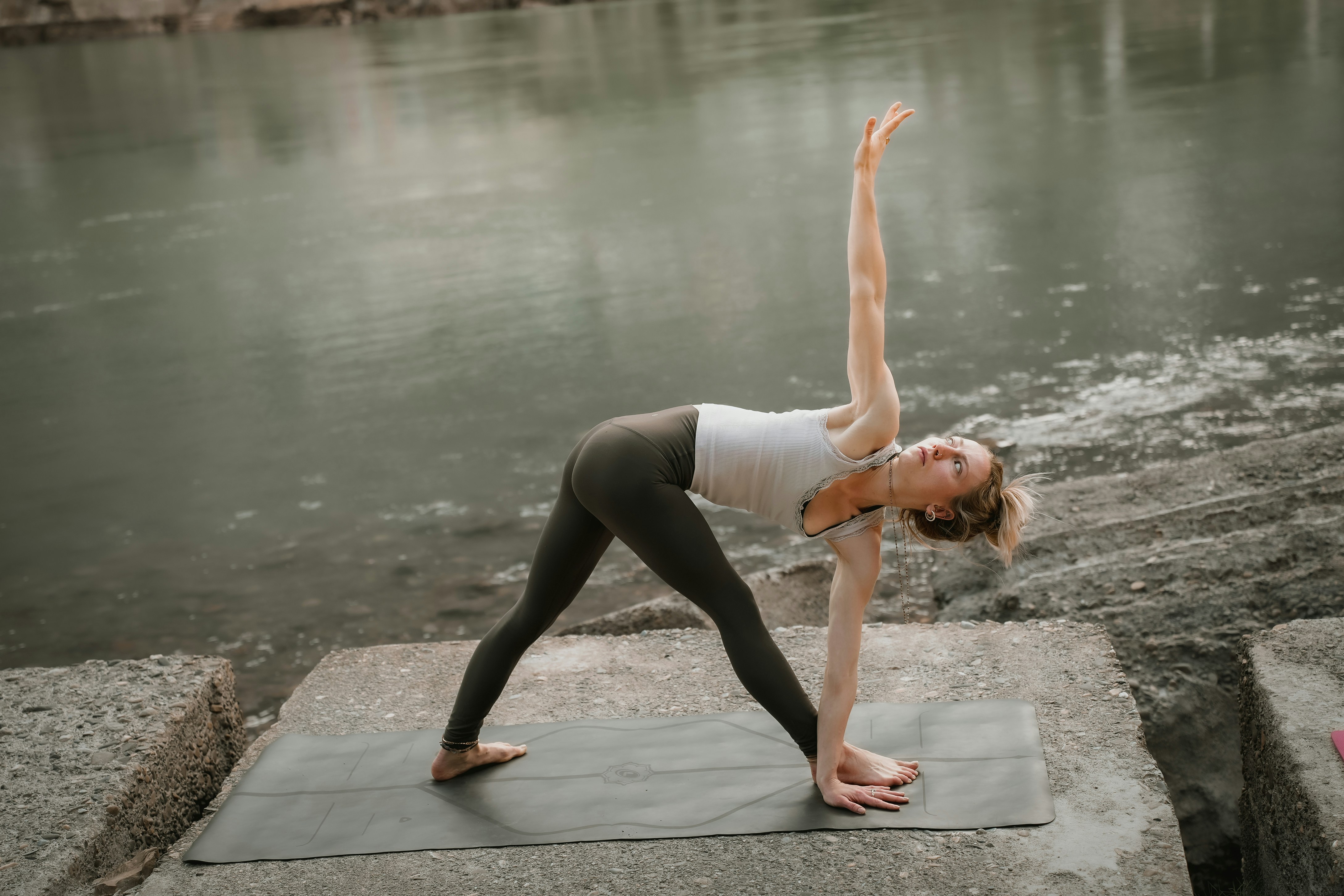Practice
Yoga Poses for Anxiety: How Yoga Can Help Ease Your Mind

Anxiety can take many forms: overwhelming thoughts, physical tension, and even feelings of helplessness. Over the years, I’ve found that yoga is a powerful way to calm both the body and mind, especially when the weight of anxiety becomes too much to carry. In this article, I want to share how yoga poses for anxiety have helped me regain a sense of peace and equilibrium, even when my mind seems chaotic. Yoga isn’t just a physical workout—it’s a mental and emotional practice that provides relief, clarity, and a break from constant mental noise.
Why Yoga is Effective for Anxiety Relief
When you’re in the grips of anxiety, the body often responds with a tense posture, shallow breathing, and an inability to relax. I’ve experienced these symptoms many times, and what has worked best for me is turning to yoga for relief. The beauty of yoga lies in its holistic approach—it combines breathwork, physical movement, and mindfulness, all of which are essential tools for managing anxiety.
One of the things I’ve learned is that yoga helps create space for slowing down. By focusing on your breath and physical sensations, yoga allows you to disconnect from the racing thoughts that often accompany anxiety. The deliberate, slow movements work to open up areas of tension in the body, while the breath anchors your mind. This powerful combination helps break the cycle of anxiety, providing a deep sense of calm.
How Yoga Poses for Anxiety Affect the Nervous System
Yoga has a direct impact on your nervous system, which is key in managing anxiety. Anxiety often triggers the body’s fight-or-flight response, leading to an increase in heart rate, shallow breathing, and muscle tension. The practice of yoga, particularly specific yoga poses for anxiety, activates the parasympathetic nervous system—the body’s relaxation response. This system counteracts the fight-or-flight mechanism and helps the body return to a state of calm.
As I’ve continued to practice yoga for anxiety, I’ve realized that one of its greatest benefits is its ability to stimulate this relaxation response. Yoga can help release physical tension and slow down the breath, which in turn lowers heart rate and calms the mind. Over time, I’ve found that consistent yoga practice helps me be more aware of my body’s signals, allowing me to intervene before anxiety spirals out of control.
Yoga Poses for Anxiety: The Ones That Help Me the Most
Through trial and error, I’ve discovered certain yoga poses that are particularly helpful in alleviating anxiety. Each one serves a different purpose—some release tension, others help calm the mind, and some create space for deep breathing. Below are some of the poses that I’ve found to be the most effective when dealing with anxiety.
Child’s Pose (Balasana)
One of my first go-to poses when anxiety strikes is Child’s Pose. This pose is incredibly grounding and provides a moment of pause. It’s a simple pose—just kneeling on the mat with your forehead resting gently on the ground and your arms stretched forward. The key with Child’s Pose is to let your body relax deeply into the floor. It’s an invitation to release any tension in the back, shoulders, and neck, all areas that can hold onto stress.
What I love about Child’s Pose is the calming effect it has on my breath. Each time I return to it, I focus on the breath entering and leaving my body, allowing myself to let go of any anxious thoughts. It feels like a moment of surrender, and the stillness that comes with it provides a break from the mental chatter.
Downward Dog (Adho Mukha Svanasana)
Another essential yoga pose for anxiety that I rely on is Downward Dog. Though it’s physically challenging, the benefits it offers in terms of relieving anxiety are immense. This pose works wonders in stretching the hamstrings, back, and shoulders—all areas that can become tense when you’re stressed or anxious. What I love about Downward Dog is that it encourages deep, rhythmic breathing, which activates the body’s parasympathetic nervous system.
In this pose, I focus on lengthening my spine and pressing my heels into the floor. This creates a sense of space in the body, which helps calm my anxious energy. Downward Dog also energizes the body, which can be uplifting when anxiety is causing a sense of physical exhaustion.
Legs Up the Wall (Viparita Karani)
Legs Up the Wall is a restorative pose that has helped me immensely in times of anxiety. This pose involves lying on your back and extending your legs up against a wall, while keeping your arms relaxed by your sides. The gentle inversion encourages blood flow and promotes relaxation throughout the body.
This pose is particularly calming because it allows me to fully unwind. As I lie with my legs up the wall, I focus on deepening my breath and feeling the release of tension from my lower body. The inversion also helps to quiet my thoughts and redirect my attention toward the present moment, which is a relief when I’m feeling overwhelmed by anxious thoughts.
Cat-Cow Pose (Marjaryasana-Bitilasana)
Cat-Cow Pose is a dynamic flow that involves alternating between arching and rounding the spine. I use this pose to release tension from my back and neck, areas that can often hold stress. The gentle movement, coupled with deep breathing, helps clear my mind and reestablish a sense of balance. When I transition between the two poses, I exhale and let go of any physical or mental tension, then inhale deeply to create space and energy in my body.
This simple flow helps reset my body and mind. I’ve found that incorporating Cat-Cow into my practice whenever I’m feeling anxious helps to release tightness in my spine and keeps me grounded in the present moment.
Savasana (Corpse Pose)
Savasana is, without a doubt, one of the most powerful poses when it comes to managing anxiety. While it may seem like a simple relaxation pose, it’s incredibly effective at quieting the mind and body. Savasana is a final resting pose, where you lie flat on your back with your arms extended by your sides and your legs straight. This pose allows the body to fully relax, letting go of any remaining tension.
When I practice Savasana, I focus on releasing all mental chatter. I let go of worries, anxieties, and distractions, allowing myself to fully surrender to the present moment. It’s in this deep state of rest that I often find the most peace. The stillness of Savasana, combined with slow, mindful breathing, creates an immense sense of calm and clarity.
Making Yoga Poses for Anxiety a Regular Practice
In my experience, the key to using yoga poses for anxiety effectively is consistency. It’s not about waiting for anxiety to become overwhelming before turning to yoga—it’s about making yoga a regular part of your life so that you have the tools to manage anxiety before it takes hold. Even just a few minutes of practice each day can have a profound impact on how you handle stress and anxiety in the long run.
For me, integrating yoga into my daily routine has been transformative. Whether it’s starting the day with a few rounds of deep breathing and Child’s Pose or winding down with Savasana in the evening, yoga has become an essential practice for maintaining mental health and emotional well-being.
Conclusion
Yoga poses for anxiety offer a natural and effective way to manage stress and calm the mind. By incorporating poses like Child’s Pose, Downward Dog, Legs Up the Wall, and others into your practice, you can experience the mental and physical benefits that come with reducing anxiety. Yoga isn’t just a temporary fix—it’s a long-term tool that helps you stay grounded, present, and at peace. If you’re dealing with anxiety, I encourage you to explore yoga as a way to reconnect with your body, ease your mind, and bring a sense of calm back into your life.










